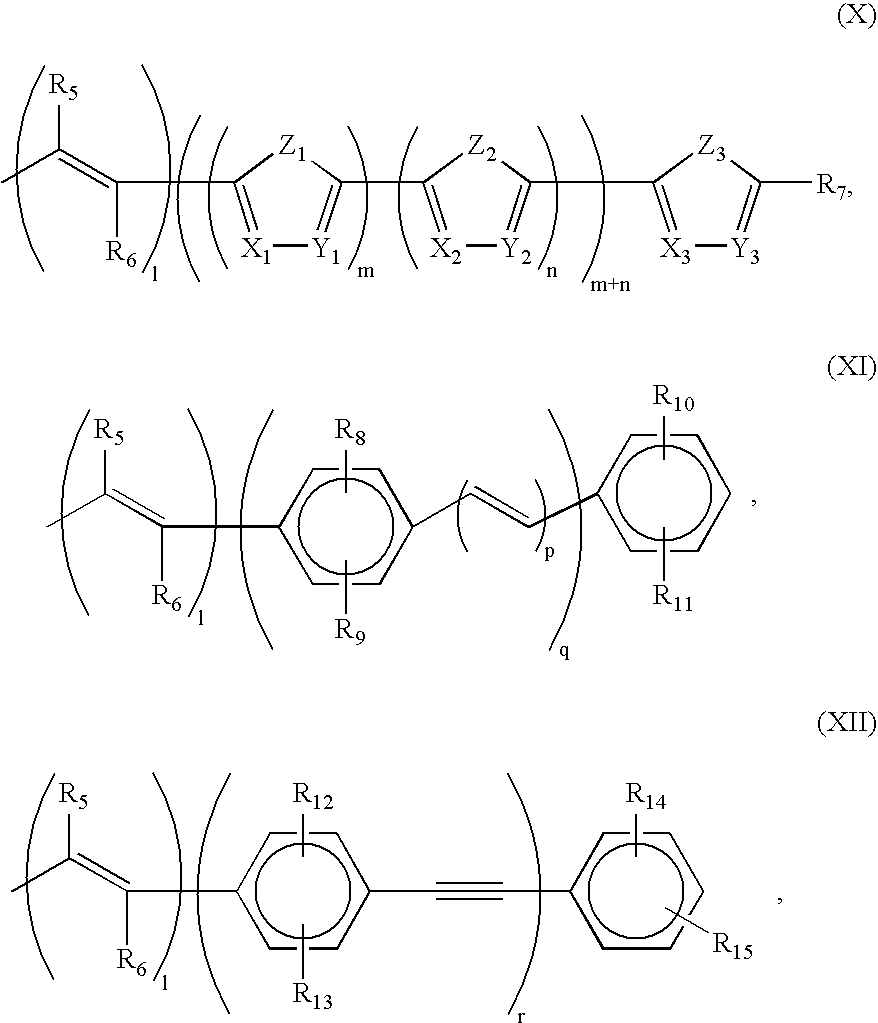Organic luminescence device
- Summary
- Abstract
- Description
- Claims
- Application Information
AI Technical Summary
Benefits of technology
Problems solved by technology
Method used
Image
Examples
example a-1
[0081] An electroluminescence device of a structure as shown in FIG. 2 was prepared in the following manner.
[0082] A 0.7 mm-thick glass substrate (substrate 1) coated with a 120 nm-thick film of ITO (indium tin oxide) (anode 2) formed by sputtering was successively washed with acetone and isopropyl alcohol (IPA) under application of ultrasonic wave and then washed with IPA under boiling, followed by cleaning by UV / ozone (i.e., irradiation with ultraviolet rays in the ozone-containing atmosphere), to obtain a transparent conductive substrate (including the substrate 1 and the ITO anode 2 formed thereon).
[0083] The transparent conductive substrate was coated by vacuum deposition of a compound (TPD) represented by a structural formula shown below: 36
[0084] to form a 70 nm-thick hole-transporting layer 5 and then by vacuum deposition of a spiro compound (Example Compound No. a-1 listed in Table 1) to form a 70 nm-thick electron-transporting layer 6. The vacuum deposition was respectivel...
example a-2
to A-20
[0088] Organic luminescence devices were prepared and evaluated in the same manner as in Example A-1 except for replacing the Spiro compound (Ex. Comp. No. a-1) with those shown in Table 17, respectively.
[0089] The results are inclusively shown in Table 17 set forth hereinafter.
example a-21
[0091] The procedure of Example A-1 was repeated up to the formation of the hole-transporting layer 5.
[0092] Then, the hole-transporting layer 5 was further coated by vacuum deposition of a mixture of spiro compound (Ex. Compound No. a-2) and aluminum tris(quinolinol) in a weight ratio of 1:20 to form a 70 nm-thick electron-transporting layer 6 under a vacuum of 1.0.times.10.sup.-4 Pa and at a film thickness growth rate of 0.2-0.3 nm / sec.
[0093] Then, the electron-transporting layer 6 was further coated by vacuum deposition of Al--Li alloy (Li content: 1 atom. %) to form a 150 nm-thick metal film 4 under a vacuum of 1.0.times.10.sup.-4 Pa and at a film thickness growth rate of 1.0-1.2 nm / sec, thereby forming an organic luminescence device of a structure shown in FIG. 2.
[0094] The thus-obtained device was then supplied with a DC voltage of 8 volts between the ITO electrode 2 as an anode and the Al--Li alloy electrode 4 as a cathode, whereby a current flowed at a density of 9.0 mA / cm.s...
PUM
| Property | Measurement | Unit |
|---|---|---|
| Time | aaaaa | aaaaa |
| Time | aaaaa | aaaaa |
| Time | aaaaa | aaaaa |
Abstract
Description
Claims
Application Information
 Login to View More
Login to View More - R&D
- Intellectual Property
- Life Sciences
- Materials
- Tech Scout
- Unparalleled Data Quality
- Higher Quality Content
- 60% Fewer Hallucinations
Browse by: Latest US Patents, China's latest patents, Technical Efficacy Thesaurus, Application Domain, Technology Topic, Popular Technical Reports.
© 2025 PatSnap. All rights reserved.Legal|Privacy policy|Modern Slavery Act Transparency Statement|Sitemap|About US| Contact US: help@patsnap.com



